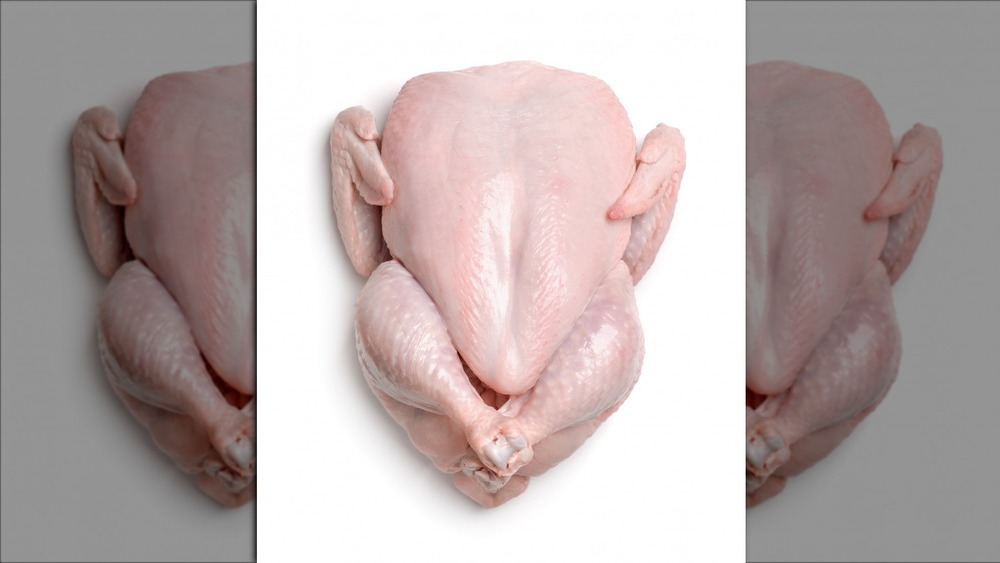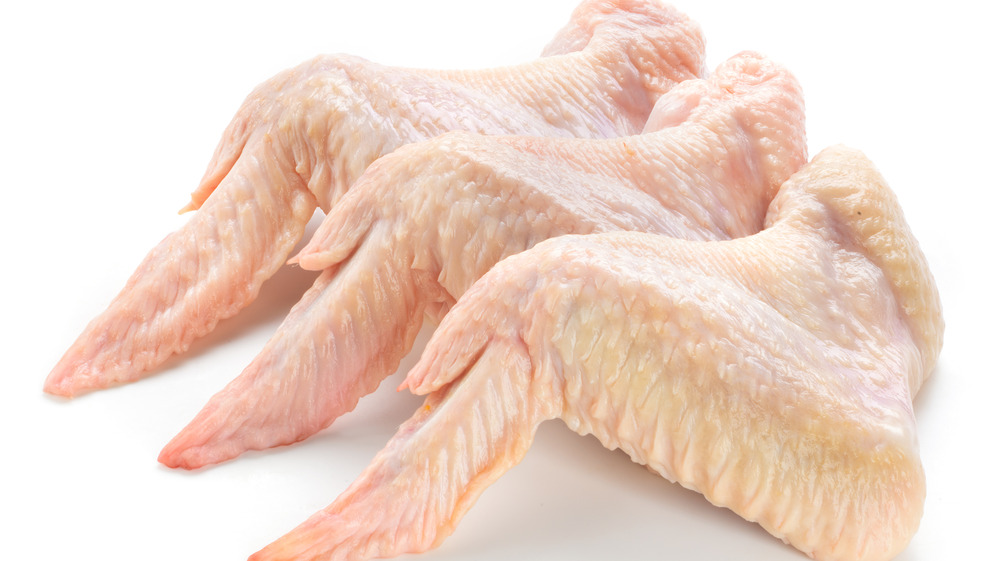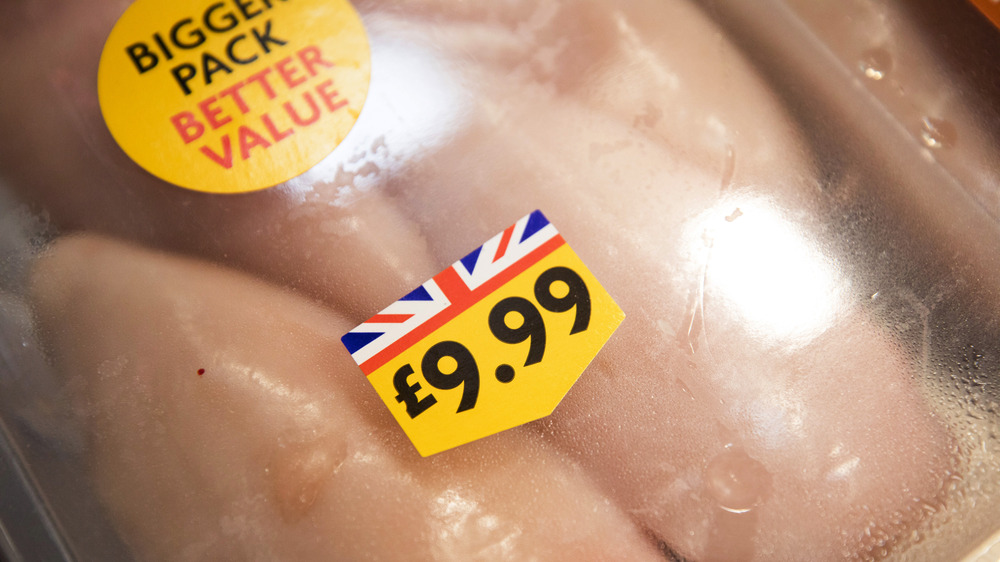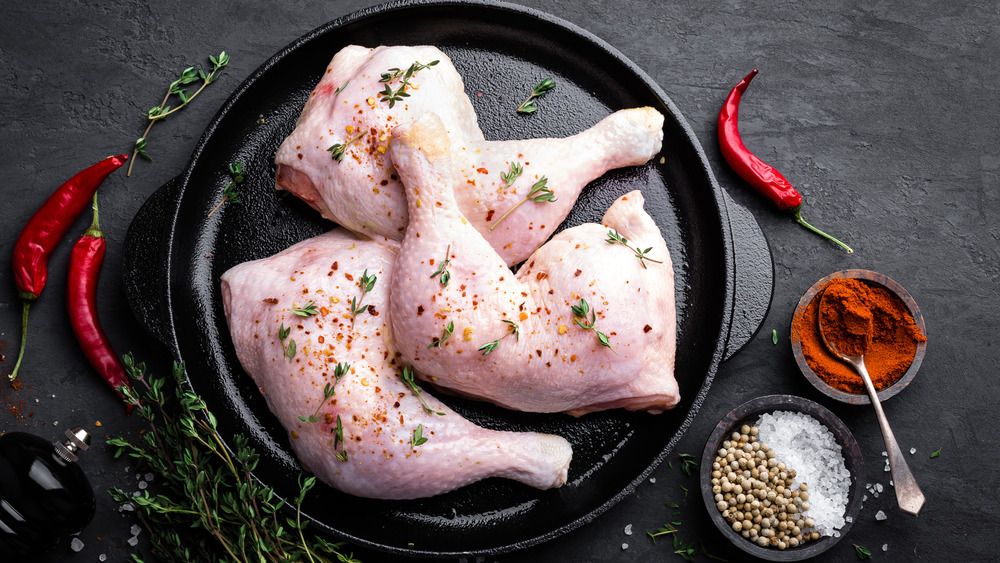Signs You're Buying The Right Type Of Chicken At The Grocery Store
While the American Egg Board may have come up with the slogan "the incredible edible egg" (via YouTube), those same adjectives could be used to describe eggs in their more grown-up version. Chicken meat is usually pretty budget-friendly, and it's undeniably versatile. Chicken can be cooked in every way imaginable, and chicken dishes seem to feature prominently in cuisines from every continent. Okay, maybe not Antarctica. As Acanela Expeditions reports, while chicken is not unknown there, duck is far more popular in the land down under the land down under.
Assuming you're not on an Antarctic expedition right now, the answer to what is perhaps life's greatest question — that being, of course, "What's for dinner?" — may very well be chicken in one of its myriad forms. If you want your chicken dinner to be a winner, though, you'll need to start off by buying the right stuff at the supermarket. In order to get some tips on what to look for in the supermarket, Mashed spoke with Chris Scott, chef at the Institute of Culinary Education, and he kindly shared with us the following chicken-choosing words of wisdom.
Make sure the meat looks fresh
Scott says that the best chicken is going to be the freshest. How can you tell if chicken is fresh, though, besides just looking at the sell-by date on the package? He advises checking the skin to make sure there is no discoloration or freezer burn. Chicken that is freezer-burned was frozen and/or defrosted improperly, and Scott says "this can result in stringy chicken and difficulty cooking it for a crispy skin."
Another thing to keep a wary eye out for is pinfeathers. Yes, all chickens come covered with feathers in their natural state, and sometimes the process of removing these feathers can be time-consuming. Nonetheless, if you do see any feathers still clinging to a piece of chicken you're considering for purchase, put it back and look for something feather-free. De-feathering is an essential part of the cleaning process, and if that chicken's been improperly cleaned, well, you don't even want to know what other grossness could be lurking there.
Extra-large parts could be a red flag
If you're buying chicken parts, take a close look at these to see if any of them appear malformed, and be particularly wary of any that look freakishly large. If your chicken wings, for example, look more like something that came off a turkey, Scott says, "This could indicate that the chicken is commodity chicken." Commodity what? A commodity chicken, he explains, is created when "a freshly born chick is injected with steroids so they can develop into a fully grown chicken in six weeks."
Eesh, doesn't that just sound like a nightmare straight out of a PETA commercial? Scott describes these mutant chickens as "very abnormal" and says that such a bird is "really bred for its parts." He admits that these parts tend to be sold for low prices, but in his opinion, "I don't think the taste of commodity chicken is as clean or as fresh tasting as free-range chicken."
Cheaper chicken isn't always better
While one of chicken's main selling points for anyone pinching their pennies is the fact that it is frequently one of the lowest-priced meats in the store, Scott feels that it's "a food where you get what you pay for." If you're buying your chicken at a lower-end retailer such as Costco and you think you're getting a great deal, he warns that "the chicken might not be the best quality."
On the other hand, if you can afford to shop at Whole Foods or, better yet, an actual butcher shop, you may wind up paying $25 for a whole chicken, but Scott feels that the expenditure is "worth it because of the way the chicken is fed, bred and grown." These ultra-pricey birds are unlikely to contain the same added hormones as their cheaper counterparts, and they may have been air-chilled rather than frozen. They're also not going to have been injected with water or other dubious fluids. As Scott tells us, "Better quality chicken just tastes fresher and more natural and more like chicken meat." Two of his favorite high-quality brands, he says, are Bell & Evans and D'Artagnan.
Consider going over to the dark side
One final tip Scott shared with us regards what parts of the chicken you should be buying. While light and dark meat chicken, if the parts come from the same bird, will be of equal quality (whether it be high or low), Scott says he much prefers dark meat, telling us, "I think it's juicer, has more flavor and works well in a wide range of dishes, from chicken tacos to fried chicken."
In what he calls non-Eurocentric cuisines, Scott says that dark meat is more often used than white meat. White meat, he feels, is more typically associated not only with European cuisine but with dishes that are considered to be more refined or upscale. One good thing about swapping out white meat for dark, however, is that in the U.S., at least, it tends to have a lower price point. If you want to get the most cluck for your buck, The Kitchn says leg quarters are your best bet, while boneless, skinless chicken breast is the most expensive (and perhaps overpriced) cut.




